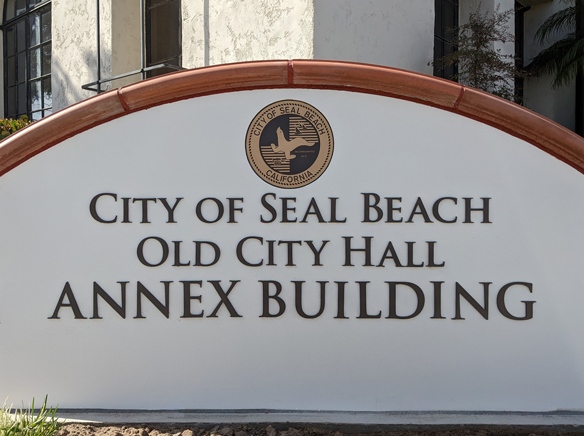The proposed rebuilding of a gas station on at 1300 E. PCH will move to the City Council.
Multiple issues came down to a vote on a single motion. The Planning Commission on Tuesday, Sept. 5, voted 3-2, to approve the project (including the addition convenience store), several variances, and to recommend Zoning Code changes.
Planning Chair Patty Campbell of District Four and Vice Chair Richard Coles of District Three cast the dissenting votes.
Tuesday’s hearing was a continuation of a discussion that began in May. (For details, see “Planners continue PCH station hearing,” at sunnews.org.)
Twelve Seal Beach residents spoke out against the project during the public comment segment of the meeting.
Only the City Council can approve zoning changes, so that issue will eventually go to the City Council at a future date. (District One Council Member Joe Kalmick and District Three Councilwoman Lisa Landau were in the audience during the meeting.)
Some residents on 13th Street have raised concerns about the narrow one-way street, the possibility of crime, and fears the convenience store would eventually become a 24-hour store that sells alcohol. Planners raised concerns about the one-way traffic on 13th Street, the variances, and environmental issues at the site.
At present the proposed store would be open from 6 a.m. to midnight. No one has submitted an application to sell alcohol at the site at this time. According to the staff report, Seal Beach Police Department officials do not believe the store will cause an increase in crime.
The owners of 1300 E. Pacific Coast Highway wanted:
• A conditional use permit to rebuild the gas station and include a convenience store.
• To change the zoning at 328 13th St. from residential high density to commercial.
• A variance (exemption) from the city’s service station requirements.
• A reduced site area (a reduction from 22,500 square feet to 13,777 square feet).
• Variances allowing reduced front and rear setbacks.
• A reduced distance between curb cuts.
• A reduced pump island setback.
• An expanded maximum driveway (from 25 feet to 45 feet).





